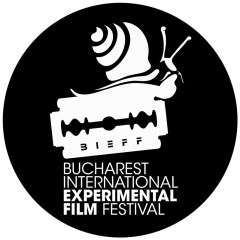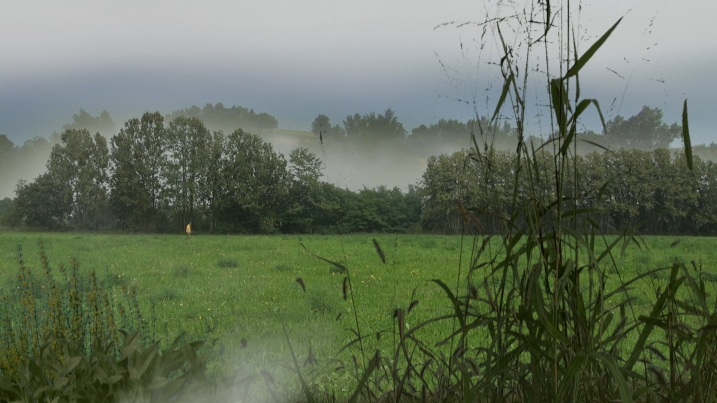Redefining the perception of space as M.C. Escher used to explore it in paintings, A PLACE TO COME reveals the mutual references between a plain description of a place and its concrete demonstration. FLATFORM is a group of artists founded in 2007, based in Milan and Berlin. Their exhibitions and screenings were present in film festivals like Venice IFF, Rotterdam IFF, Tampere IFF, Nouveau Cinema IFF (Montreal, Canada), Indielisboa IFF (Lisbon, Portugal), etc.
Ioana Mischie: In your statement, you talked about „fog becoming architecture” and we found this intriguingly fascinating. How did you choose this specific theme and why? Is blurriness sometimes more revealing than concrete-ness?
Flatform: At the beginning fog appears as an object, as something there. In a way it’s separate from you. Then, with time, the object morphs, becoming an atmosphere. This is what we mean as “fog becoming architecture” because we consider architecture as space more than built form. Fog reveals the plenitude of space. It constructs space by dividing, obscuring, reconfiguring and revealing. Fog provides spaces with specific, memorable qualities, spaces that are anything but neutral. All these actions are characteristics of Architecture. Nevertheless, in “A place to come” fog is also and overall a passage of state and a movement which, in its blurriness, concretes visions and landscapes.
Ioana Mischie: „A place to come” is a place for profound contemplation. How would you define it, in your own terms?
Flatform: “A place to come” revolves around the surprise generated by the alternation of linear succession and circularity. The description of the places anticipates the vision of the place itself, except the last sequence where the voice-over refers to the landscape with which the video begins. Escaping to the “after” ends in the “before”. To this should be added that “A place to come” is the place of paradox on the impossibility of possible worlds.
Ioana Mischie: The sound seems to evoke a different story than the one told by the images. How did you combine these different languages into an unitary one? Did you conceive each of them separately and then you made a collage out of them, or they were from the beginning part of the same concept?
Flatform: For this video we shot 45 takes on landscapes or single portions of them. Then 40 different fogs – from a black one that drifts to a white one that blurs or a thin morning one that hovers over the landscape – have joined visually what the sounds in live and the different voices-over anticipate or posticipate. From the beginning, all the different parts are held together by a single project.
Ioana Mischie: The characters might appear as rather sensorial than palpable, seeming to invade with their inner feelings the raw space. How do you position the human being in connection with the described space? Is space only a subjective perception or an objective axiomatic reality?
Flatform: The characters, through crossings, appearances, or postures, functionally emphasize the contiguity of the taken space in relationship with the lateral ones. What you see is always an “elsewhere” because the space of vision is a reality objectified by the axioms of a subjective perception.
Ioana Mischie: Technnically-wise, how was, briefly, the process of this film, from script to final form and how long did it take?
Flatform: Since the script of the project to its completion three months have passed. In this period we took 85 shots that led, in post-production, to have landscapes composed of elements of vegetation and environments taken hundreds of miles away one from each other. Only the continuous stream of fog gives unity to this complex and multiform natural universe.
More about A PLACE TO COME.

